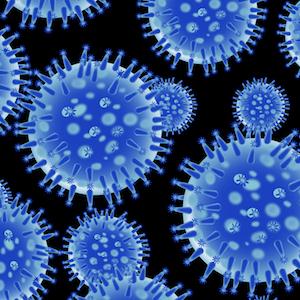Government intelligence agencies get a lot of criticism when things go wrong but rarely receive any praise when things go right. That's because, when things go wrong, they often go disastrously wrong; but when things go right... well, nothing happens.
For example, it seems clear that the latest school shooting in Florida might have been prevented if the FBI had acted properly on the intelligence it received. The FBI failed, and they are being widely castigated. But think of all the times the FBI successfully intervenes and stops a criminal or terrorist before he is able to act. Those victories usually go unreported.
The same is true of public health officials. The CDC and state and local health departments almost never get praised for the fact that life-threatening infectious diseases are largely an afterthought in our society. Instead, they are routinely accused of acting like Chicken Little when they beg people to get their flu shots and warn of possible pandemics, but are then criticized when those flu shots aren't as effective as they hoped or the pandemics never manifest. Thus, like government intelligence, public health is a thankless job.
Predicting Pandemics
Part of the problem is that predicting -- and communicating the dangers of -- high-impact, low-probability events is very difficult. Officials must strike a balance between needlessly causing alarm and complacency, while knowing that any decision they make now will be judged in the light of 20/20 hindsight.
A new paper by Jeffrey Shaman in Nature Microbiology outlines the challenges that need to be addressed to successfully model the spread of infectious disease. He argues that creating "risk maps," which depict geographical areas that are particularly susceptible to disease outbreaks, require two key components: (1) identifying possible emerging diseases (e.g., an obscure virus that could jump from animals to humans); and (2) assessing the likelihood and extent of a local outbreak and subsequent geographic spread.
Dr. Shaman draws an analogy with hurricane predictions. By combining meteorological information (that provides insight on how and where a hurricane may form) with geographical and socioeconomic data (that provides information on how resilient an affected area might be in response to a hurricane), maps can be generated that depict which parts of the world are at highest risk.
Unlike hurricanes, which we can forecast fairly well, infectious disease is not easily predicted. When a low-pressure area develops over the ocean, meteorologists know that a hurricane could form. But epidemiologists have no idea when a virus jumps from an animal into a human. That's not an event that can be monitored in real-time like the weather. In other words, component #1 in the infectious disease model is a black box.
Fortunately, the spread of a disease, component #2, is more easily predicted. In fact, recent research shows that a similar underlying model can explain the spread of disease, riots, and fake news.
The solution, then, is to focus efforts on disease surveillance, component #1, which includes improvements in diagnostics and data sharing. We want American scientists to know as quickly as possible when an unusual case of the sniffles occurs in Africa or Asia. From there, we could be able to model the likelihood of the disease spreading beyond its origin. Such a strategy could help prevent Ebola from making a return visit to the United States.

Source: Jeffrey Shaman. "Pandemic preparedness and forecast." Nat Microbiol 3: 265-267. Published online: 20-Feb-2018. doi: 10.1038/s41564-018-0117-7




